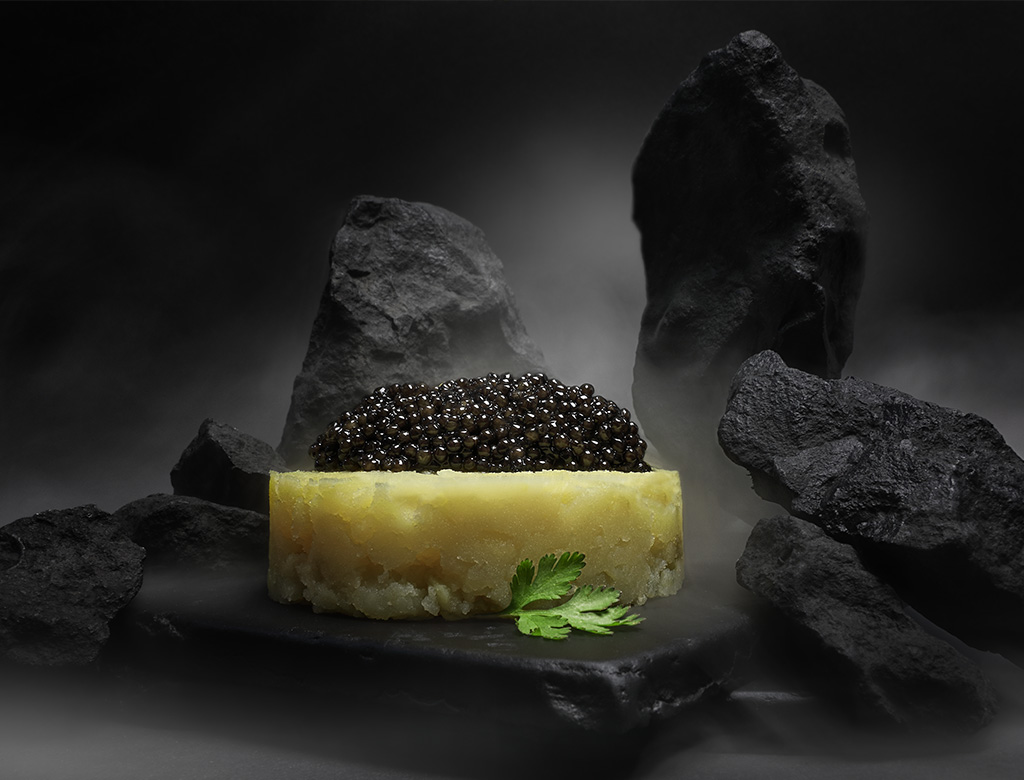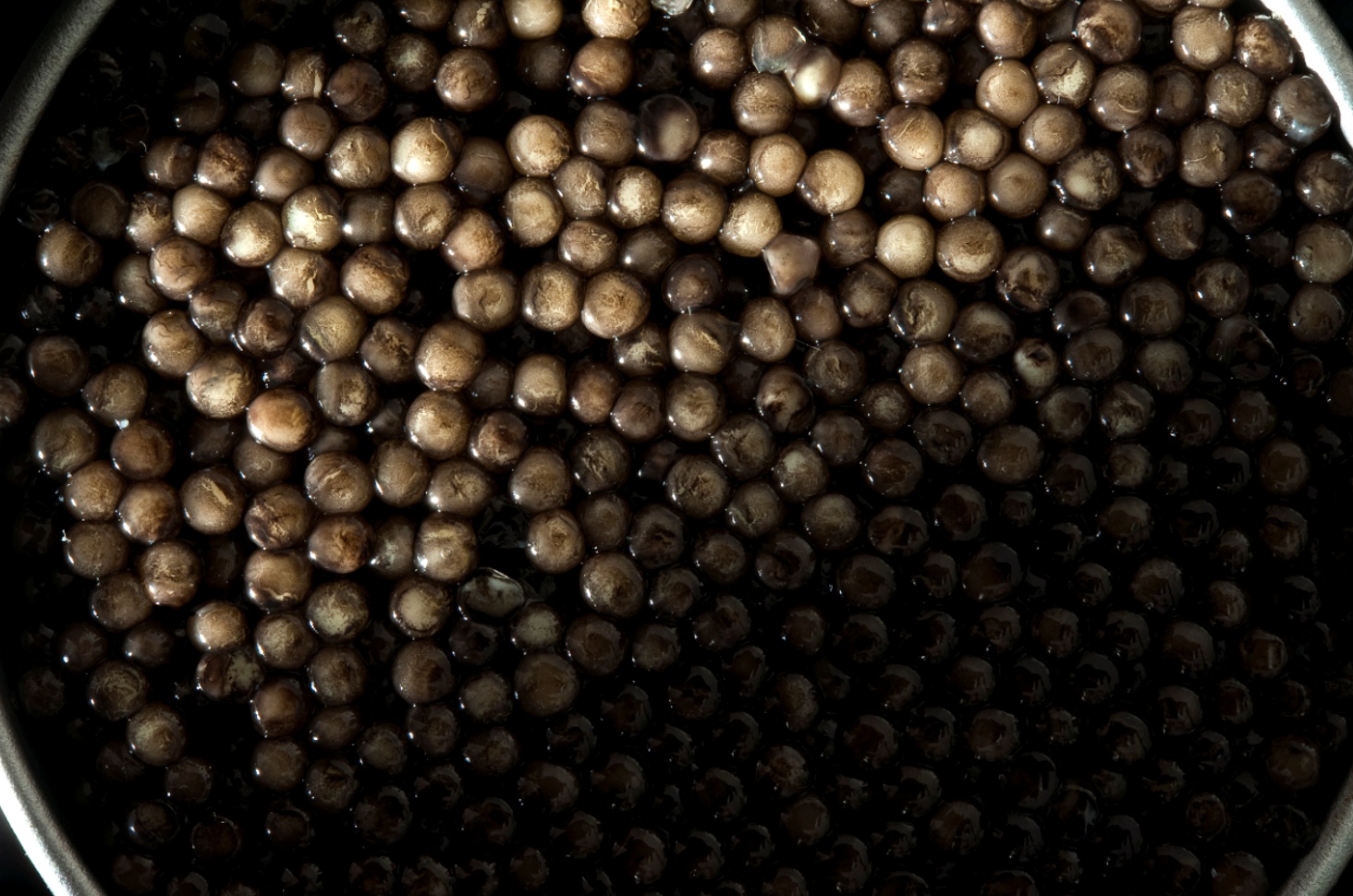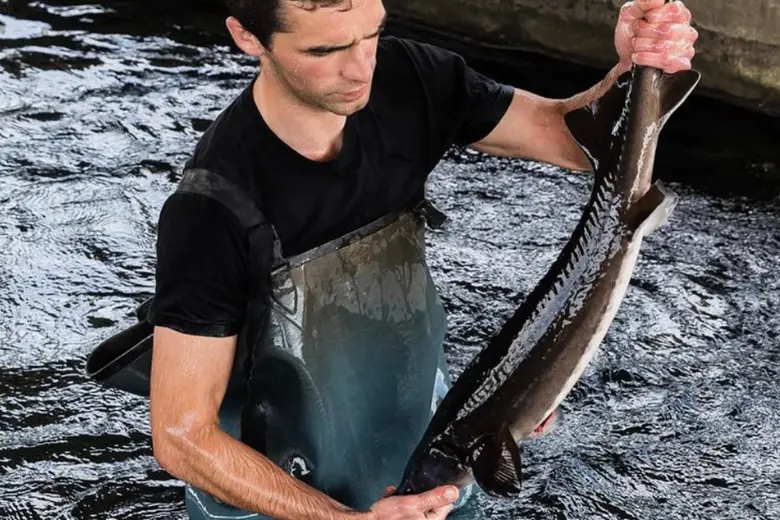It is currently a Top gastronomic product that is found almost everywhere, and that is produced all over the world because many investors have created farms in Sturgeon, wild caviar having become very rare.

In the world, for many centuries, as evidenced by very ancient writings, the origin of Caviar was Iranian and Russian. Also in Azerbaijan, Kazakhstan, Moldova, Romania and Ukraine. The most beautiful sturgeons live in the Caspian Sea, Lake Baikal, Black Sea, Danube, Amur River, in the Volga and its multiple rivers, France for the species Sturio, but man has greatly depleted the resource by fishing almost all sturgeon. Also, these wild origins have been banned from import into Europe since 2008 to try to preserve wildlife. Hence the idea of breeding all over the world. In 2023, farmed caviar has invaded the world of gastronomy to replace the wild. China, Italy, France, USA, Uruguay, Israel, Bulgaria, Romania, Belgium, Madagascar, Saudi Arabia are the largest producers; China is the largest.
.jpg)
Caviar is therefore the eggs of the sturgeon, a primitive fish that existed at the time of the dinosaurs! It is the largest freshwater fish; some wild fish can measure 7 to 8 meters and weigh more than a ton. They live on average 60 to 80 years, sometimes 100 years. But alas there are no longer such big fish, the man equipped with background radar-sonar caught them for profit.
The gastronome has lost a lot. If Caviar remains very good, very fine, it no longer has the same taste qualities as the wild before, no offense to the marketing offices responsible for promoting new brands of Caviar. It is a question of water, food, concentration of fish, fish strains and the young age of fish: Breeding has its economic and environmental rules, long before the judgments of gourmets!

There are almost 27 kinds of sturgeon, species that will give the name to Caviar. The best-known wildlife species currently are:
Beluga: A big fish, which gives big eggs, exceptional. The Almas, very rare, is a white beluga. Very expensive, of an extraordinary finesse and fondant. Oscietra: Small clear eggs - Sevruga: A small sturgeon - Sterlet, or Siberian: The smallest fish that provides small quantities - Sturio: It lives in fresh or sea water in the southwest of France - mostly.
The farmed species are mainly European sturgeon, white sturgeon, oscietra, beluga and Baerii which replaces the rare Sturio for the Aquitaine caviar (France).
In general, farmed fish are 50% smaller than wild ones and have a short life! In 2023 Genetics is profoundly disrupted.
.jpg)
The manufacturing process requires a lot of skill; Once the belly of the fish is opened, we act with delicacy to separate the grains and salt them.
There is fresh caviar, but also a lot of sterilized for commercial reasons. Fresh Caviar must be consumed within a maximum of one month, it must be kept cold. Sterilized caviar can be kept from 6 months to 2 years. Open, it must be eaten within 3 days.
Sterilized caviar is of little interest given its high price. Sterilization makes him lose a lot in terms of flavors and its "fondant-crunchy".
Caviar can be used in many ways for many recipes or simply enjoyed plain. In this case it is often accompanied by a good Champagne, a Vodka, an Aquavit served very cold. Also pairing well with a real dry white like Chablis, Muscadet Cru, Tursan or Riesling d'Alsace.
A few grains of caviar on an oyster, on the back of a fish fillet, will give nobility, elegance, to your dish. Caviar pairing perfectly with a poached egg, scrambled or boiled eggs, a potato with crème fraiche.

Every Chef can use Caviar in his recipes: it's up to him to find the right match according to his creativity and talent.